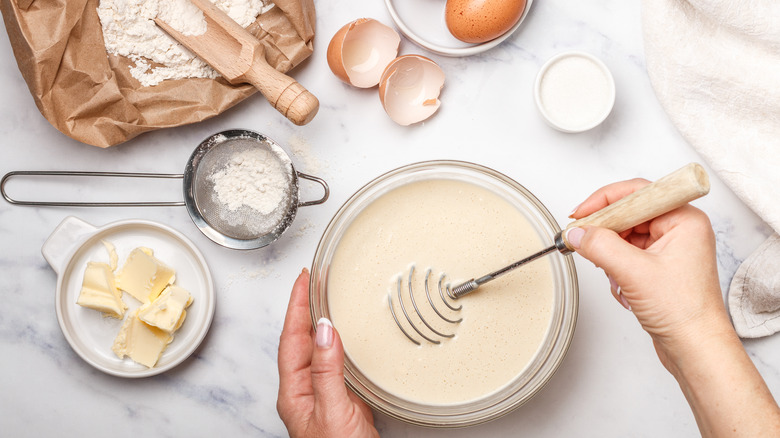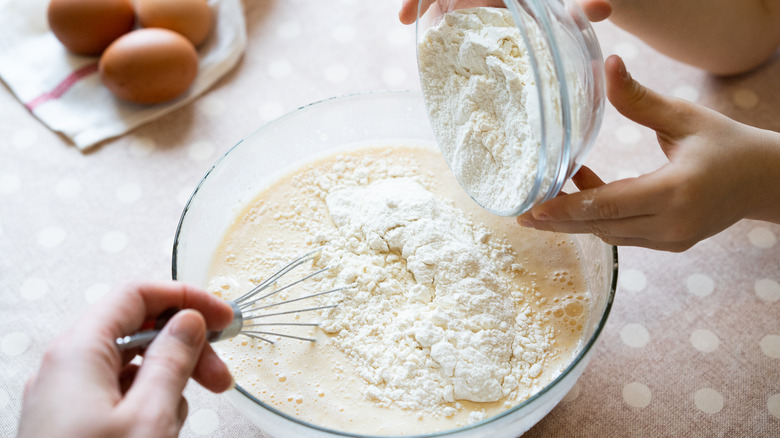The Hack That Will Keep You From Ever Overmixing Batter Again
If you're a novice baker, you may have found yourself confused when faced with a recipe that simply tells you not to overmix your batter but fails to clarify what exactly qualifies as overmixing — and how you can tell if you've been whisking away for too long. Luckily, there's an easy hack that can simplify things. Rather than mixing as you normally would, you just need to perfect your folding technique, as Lifehacker explains. And, while it's often commonly recommended as a way to incorporate delicate, light ingredients such as whipped cream or egg whites, the technique can be used in a wide variety of batters.
According to The Spruce Eats, when folding ingredients together, you're typically combining different thicknesses and weights, such as the wet and dry ingredients in a cake batter. Rather than mixing the batter repeatedly in a circular direction as you would with most batters and risk accidentally overmixing your dish, when you fold your ingredients together, you essentially scrape a spatula along the bottom of your mixture, flip it over top, and repeat the motion several times until your ingredients are just incorporated (another term you might recognize from various recipes that are trying to prevent you from creating dense, unappetizing baked goods).
For those who need to see the folding technique in action, there are plenty of tutorials online, including one YouTube video from Food 52's Sohla El-Waylly, in which she folds together the ingredients to make a light and fluffy souffle.
A few tips to prevent overmixing
The practice of swapping your technique and simply folding in your ingredients rather than enthusiastically mixing them together should go a long way in helping to prevent an overmixed batter. However, there are a few other tips that you may want to keep in mind if you find that you always tend to take things a little past that "just incorporated" stage. After all, when you overmix a batter, it can become tough.
First, don't assume you need to have a perfectly smooth batter. As Food52 explains, some dishes like pancakes and waffles will turn out just fine if some lumps remain, as a perfectly smooth batter could look lovely but end up overmixed, resulting in a rubbery final product. In dishes like cakes and cookies, you want to mix in the flour until it just disappears — and then stop immediately, as Paste Magazine recommends, resisting the urge to continue churning the batter around for another couple of minutes.
Also, if you're mixing with a machine rather than by hand, don't turn your mixer up to the high setting unless the recipe actually tells you to do so, as explained by the Cake Decorist. While it may be tempting to speed up the process, you run a far greater risk of overmixing than if you patiently allow everything to combine on low. Now, you can make pancakes every morning with a light heart, as you'll know how to prevent them from becoming tough.

